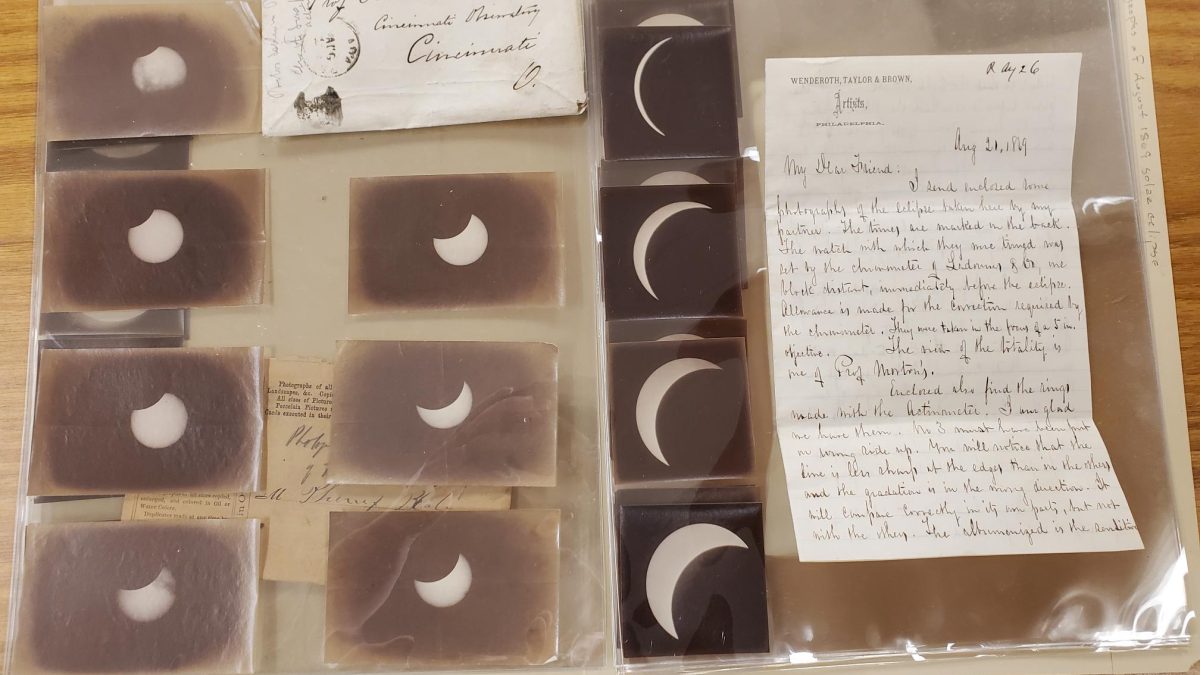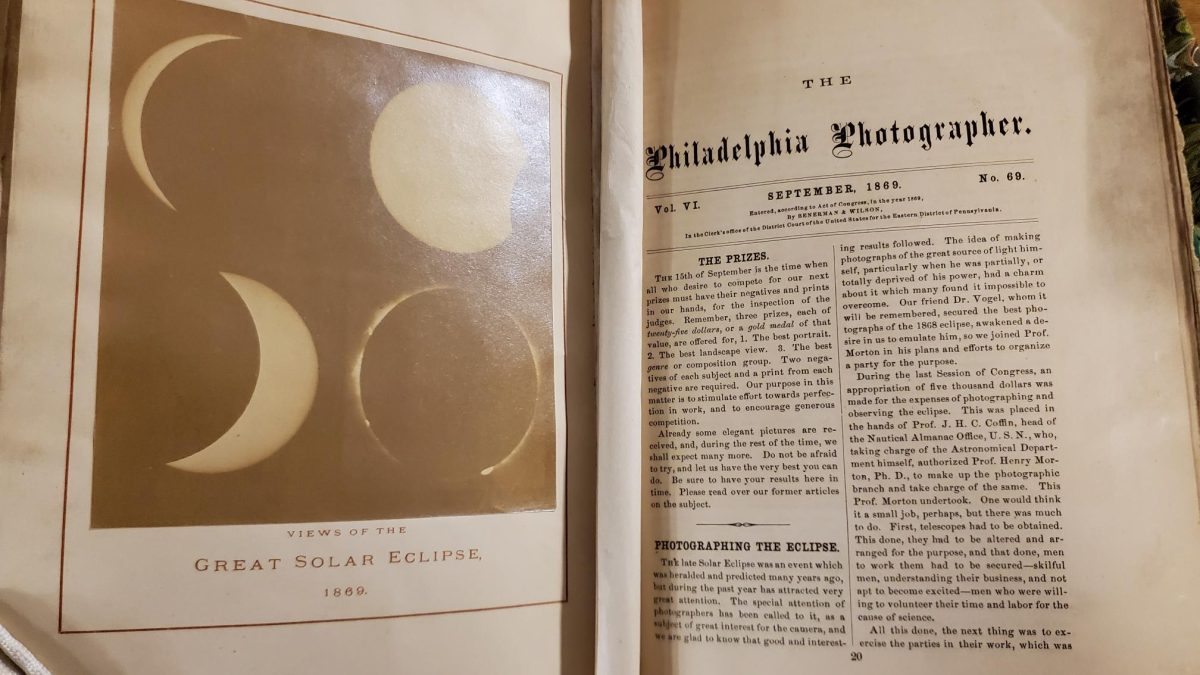Earlier this year, “eclipse fever” struck the Cincinnati area when a total solar eclipse was visible across portions of North America. The timing of the 2024 celestial event coincided with recent research on a group of photographs documenting an 1869 total solar eclipse housed in the records of the Cincinnati Observatory, which are preserved at the Archives and Rare Books Library. Those photographs will be featured in the upcoming public television documentary “Capturing Life” (1839-1869), the first episode in the series, The Big Picture: A History of Photography in Greater Cincinnati, produced by Voyageur Media Group, Inc.

Voyageur’s production team conducted research on two subjects at the Archives and Rare Books Library for the series. Project Director, Tom Law, says the ARB staff helped him research documents about Dr. John Locke, a professor of Chemistry at the Medical College of Ohio. Dr. Locke was the first American to display an early form of photography, “photogenic drawings,” at a bookstore in Cincinnati in 1839.

Voyageur will also show twenty-four rare photographs of a total solar eclipse from the Cincinnati Observatory’s scientific expedition to study and photograph the eclipse along its path of totality in the Dakota Territories in 1869. Voyageur learned about the 1869 expedition when visiting an exhibit created by Mandy Askins, Assistant Collections Manager at the Cincinnati Observatory Center.
In the documentary, Askins describes how Cleveland Abbe, Director of the Observatory, led a team of scientists and photographer W.C. Taylor to Fort Dakota (near present-day Sioux Falls, South Dakota), to study and photograph the solar eclipse on its path of totality. Taylor took twenty-four photographs of the event, which were later printed by John Wildman Winder for the Cincinnati Observatory. It is Winder’s photographs that are preserved in the Archives and Rare Books Library at the University of Cincinnati.
“Capturing Life” (1839-1869) closes with examples of how archival photographs are being used today in books, classrooms and exhibits seen throughout the world. Tom Law says, “The documentary is dedicated to the scholars, curators, archivists, and librarians who are preserving the region’s rich photographic heritage for future generations.” More information about this project, including three, free public screenings in October, is available on Voyageur’s website: https://voyageurmedia.org/
“Capturing Life” (1839-1869) is a collaborative project among dozens of scholars and institutions throughout Greater Cincinnati. Two project scholars have ties to the University of Cincinnati. Author, professor emeritus, and former head of the Archives and Rare Books Library Kevin Grace is serving as a project advisor. Dr. Theresa Leininger-Miller, a professor in art history in the College of Design, Architecture, Art, and Planning, is featured in the segment on African America photographer James Presley Ball. Dr. Leininger-Miller is also serving as a project advisor.
